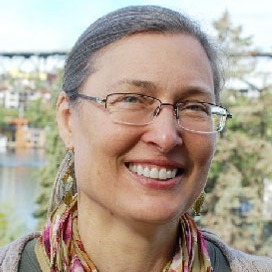
Research
I am interested in understanding how proteins are mechanically regulated, with a particular emphasis on adhesion. Many proteins experience mechanical force from fluid flow, cytoskeletal forces, or other sources. This might be expected to weaken adhesion, by tearing the bound molecules away from each other, but we study situations where force or fluid flow enhances adhesion. In particular, we study catch bonds, which are biological receptor-ligand interactions that bind longer when you try to pull them apart. We study the biophysics of adhesive mechanics in order to understand and address related clinical problems and to design novel adhesive technologies.
One project in the lab involves studying a bacterial adhesive protein called FimH that forms catch-bonds. Bacteria binding through FimH will only bind firmly at high levels of fluid flow, and will roll across the surface or detach if the flow is stopped. FimH is expressed on most of our intestinal bacteria and is involved in urinary tract infections. One thrust of this research is to understand how bacteria use catch bonds to form biofilms in the presence of flowing bodily fluids. We hope to learn methods to prevent biofilms from forming on indwelling medical devices such as urinary catheters since this can lead to sepsis and death.
FimH catch-bonds have remarkable properties, lasting less than a second in the absence of mechanical force but surpassing the strength of biotin-streptavidin bonds at high force. This makes them the ultimate in reversible adhesion. Like a nanoscale locking seatbelt, they bind when needed but allow movement at other times. Their ligand, mannose, is ubiquitous in human tissues. We are thus pursuing a wide range of technological applications of FimH for microfluidics, nanotechnology, and biomaterials.
A second project involves thrombosis, or blood clots. Most mechanisms through which blood can clot do not function well at high shear stress, which is encountered in spurting wounds. One mechanism?binding of platelets to the blood protein von Willebrand Factor?not only works in this condition, but it actually requires high shear to be activated. We are seeking to understand the molecular basis of this shear activated thrombosis. Unfortunately, high shear is also encountered in advanced atheroschlerosis, where plaques restrict vessels, so this protective mechanism can cause blood clots in these vessels that in turn can cause a heart attack or stroke. We hope that understanding this mechanism will lead to minimally invasive ways to protect patients with atheroschlerosis from deadly blood clots.
We integrate computational and experimental tools for all of these projects. We use an atomic force microscope to apply force to single molecular bonds or macromolecular complexes. Molecular Dynamics simulations and Rosetta protein structure prediction allow an understanding of the structural basis of the observed behavior. Genetic mutation of the proteins can link the structural simulations to the experiments. We also use microfluidics to see how cells or microparticles adhere in flow. Multi-scale simulations relate the nanoscale molecular properties to cellular or other microscale properties in our different experiments. For success in this interdisciplinary research, some group members do both simulations and experiments, while others do just one or the other and instead collaborate to enable integration of the two approaches.